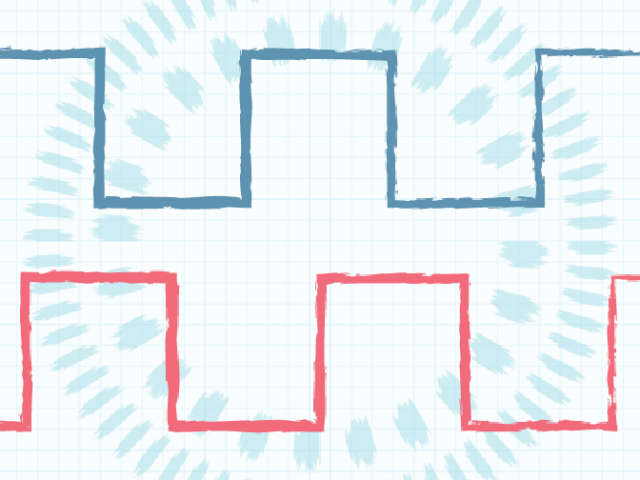This article looks at the responses that industry experts gave when asked what their thoughts are on STEM teaching and learning – specifically, the question of what they believe could be improved in engineering education at the university level.
Student Circuit spoke to:
- Aaron Yeardley, Carbon Reduction Engineer, Tunley Engineering
- Mark Patrick, Technical Marketing Manager, Mouser
- Huei Sin Ee, President of Keysight Education, Keysight
- Y.C. Wang, Director Global Academic Programme, Digi-Key
- Jay Shen, CEO, Transreport
- Paul Acarnley, Manager, E3 Academy
The professionals’ answers collectively reflected that STEM educators should strive to see university engineering education become modern, gender-inclusive, and formed of curricular – and extracurricular – activities that not only have real-world validity but also offer students hands-on learning and the chance to network with other members of the industry.
Making STEM education more modern
As always, for an industry to keep up with the times – it needs to move with the times. Engineering education will not be modernised if it doesn’t reflect just how AI-driven the world has become, and will continue to be.
“Design education needs to coordinate Industry 4.0 with its curriculum,” explained Aaron Yeardley, MEng AMIChemE. “It is vital that engineers understand how to apply tools such as machine learning.” The carbon reduction engineer went on to state that he believes many of the engineers of tomorrow are being equipped with software design knowledge “through early learning with coding and programming” – but there is still more to the requirement than this.
“The application of such [coding and programming] methods is just as important as the development of artificial intelligence tools. Learners need to know how to get data from the Internet of Things, and then apply the method that suits the data.
“The industry is changing so fast during this digital revolution, it is vital that future workers can adapt quickly and collaborate with others to use the most efficient tools at their disposal.”
Aaron’s thoughts are complemented by the views of Huei Sin Ee, President of Keysight Education, who stresses the importance of technological innovation and the correct engagement with it.
“Universities should deepen real-world industry experiences with project-centric learning,” said Huei. “Learning-by-doing: experiential, hands-on learning – with activities like hackathons and Maker Spaces – to help students accelerate learning across the domains, similar to real-industry working models.
“[Universities should also] provide active experiential education using industry-level equipment: software and simulation tools for students to be able to hit the ground running and contribute quickly in the industry when they graduate.”
She continued: “Consider implementing a ‘design flow’ approach [to the] curriculum. Teach the concept … in multivariate spaces for providing options in the management of design decisions.”
Mark Patrick, Technical Marketing Manager at Mouser also emphasised just how crucial design skills are to the industry. And therefore making the teaching of hardware design simultaneously educational and entertaining is paramount.
“Don’t underestimate the value of hardware design,” Mark explained. “While platforms like Raspberry Pi and Arduino have made coding accessible, we need similar initiatives to make hardware design just as accessible and fun.
“Distributors have a role to play in this space. Being aggregators of technology, they can bring together components and modules, along with code and step-by-step instructions, showing how to build a variety of projects.”
Making STEM education more hands-on
Of course, technological innovation will not be enough without the learning and teaching experience becoming more intuitive. As Y.C. Wang noted: “Something that I often see missing from a student’s design education is the ability to bridge the gap between the skills and knowledge they learn in class and the responsibilities and technologies that are listed on job postings for potential employers.”
“Students today really must be willing to be self-taught in many ways: course curricula are often developed or updated to include emerging technologies slowly, so it’s imperative that students are willing to learn more about cutting-edge technologies like AI and machine learning, IoT and more – outside of the classroom.
“One piece of advice I always give to students is to attend as many trade shows as they can. These shows often offer discounted student rates and are a great way to learn about and experience cutting-edge technologies in person. [They’re] also great networking opportunities.”
Y.C. Wang later explained what educators can do to further encourage this hands-on approach for students: “I would encourage instructors and professors to consider finding creative ways to pick up advanced knowledge outside of the classroom – perhaps offering extra credit for reading articles, attending trade shows, thought exercises, and more.”
Making STEM education more inclusive
Even if engineering education was to become more modern and creative, the fact would remain that the STEM field still has a very low percentage of tomorrow’s female engineers when compared to their male counterparts. According to the Women’s Engineering Society: “Girls and women make up less than 18% of higher apprentices in engineering and manufacturing, and 7.4% of all engineering apprentices”.
As Jay Shen, the CEO of the transport accessibility company Transreport, put it: “When I was at university, studying mathematics – overwhelmingly, there was a majority of boys. And I think probably that’s a norm throughout the STEM courses. Consider IoT technology – which is technology that’s growing so fast. … That’s going to be everything people talk about. What I worry about is that technology can be biased.
“Think of facial recognition technology: that’s actually biased towards white males. You actually have a higher percentage of accuracy when it comes to white people. … I don’t know the root cause of it, but … the researchers are mostly based in Europe and the US.”
Jay went on to say that he has concerns about the male-centric nature of STEM in other areas of the IoT and artificial intelligence, particularly the Metaverse. “The people creating the Metaverse are predominantly men. … We need more female researchers, scientists, and engineers to go into the STEM space. Otherwise, I do have a fear that that area of AI could probably impact everybody’s daily lives [with its biases] in the future.”
“I think the education system must encourage more girls to go to those STEM curriculum areas so that in the future we know that those cutting-edge technologies [like the Metaverse] will reflect a balanced view of society.”
Making STEM focused on self-learning
The above thoughts of industry experts Aaron Yeardley, Mark Patrick, Huei Sin Ee, Y.C. Wang, and Jay Shen reflect just how vital it is for engineering education to be as modern, experiential, and inclusive as possible.
Another crucial consideration relates to how students can not just learn about engineering – but how they can learn to continue learning. “When you’re at university,” said Paul Acarnley, Manager of engineering-focused training centre E3 Academy, “you’re being prepared for the next 40 years of your working life.
“And one of the major skills that you need is in how to keep on learning – not to think ‘well, I’ve graduated now’ – because it’s changing so quickly. Have you developed the self-learning skills to carry with you throughout your career?”
Altogether, the industry experts’ views reflect that both educators and students alike have their own responsibilities in ensuring that STEM education is the best it can be. Tomorrow’s engineers will benefit from being given the facilities that will see them learn experientially, both inside and outside – and, in fact, long after leaving behind – the lecture theatres.




